The Covid-skeptic world has been claiming the World Health Organization (WHO) plans to become some sort of global autocratic government, removing national sovereignty and replacing it with a totalitarian health state. The near-complete absence of interest by mainstream media would suggest, to the rational observer, that this is yet another ‘conspiracy theory’ from a disaffected fringe.
The imposition of authoritarian rules on a global scale would normally attract attention. The WHO is fairly transparent in its machinations. It should therefore be straightforward to determine whether this is all misplaced hysteria, or an attempt to implement an existential change in sovereign rights and international relations. We would just need to read the document. Firstly, it is useful to put the amendments in context.
The changing role of WHO
Who’s WHO?
The WHO was set up after the Second World War as the health arm of the United Nations, to support efforts to improve population health globally. Based on the concept that health went beyond the physical (encompassing “physical, mental and social well-being”), its constitution was premised on the concept that all people were equal and born with basic inviolable rights. The world in 1946 was emerging from the brutality of colonialism and international fascism; the results of overly centralized authority and of regarding people to be fundamentally unequal. The WHO constitution was intended to put populations in charge of health.
In recent decades the WHO has evolved as its support base of core funding allocated by countries, based on GDP, evolved to a model where most funding is directed to specified uses, and much is provided by private and corporate interests. The priorities of the WHO have evolved accordingly, moving away from community-centered care to a more vertical, commodity-based approach. This inevitably follows the interests and self-interests of these funders. More detail can be found on this evolution elsewhere; these changes are important to putting the proposed IHR amendments in context.
Of equal importance, the WHO is not alone in the international health sphere. While certain organizations such as UNICEF (originally intended to prioritize child health and welfare), private foundations and non-government organizations have long partnered with the WHO, the past two decades have seen a burgeoning of the global health industry, with multiple organizations, particularly ‘public-private partnerships’ (PPPs) growing in influence; in some respects rivals and in some respects partners of the WHO.
Notable among PPPs are the Gavi – the Vaccine Alliance (focused specifically on vaccines) and CEPI, an organization set up at the World Economic Forum meeting in 2017 specifically to manage pandemics, by the Bill & Melinda Gates Foundation, Wellcome Trust and the Norwegian Government. Gavi and CEPI, along with others such as Unitaid and the Global Fund, include corporate and private interests directly on their boards. The World Bank and G20 have also increased involvement in global health, and especially pandemic preparedness. The WHO has stated that pandemics occurred just once per generation over the past century and killed a fraction of those who died from endemic infectious diseases, but they nonetheless attract much of this corporate and financial interest.
The WHO is primarily a bureaucracy, not a body of experts. Recruitment is based on various factors, including technical competency but also country and other equity-related quotas. These quotas serve a purpose of reducing the power of specific countries to dominate the organization with their own staff, but in doing so require the recruitment of staff who may have far lower experience or expertise. Recruitment is also heavily influenced by internal WHO personnel, and the usual personal influences that come with working and needing favors within countries.
Once recruited, the payment structure strongly favors those who stay for long periods, mitigating against rotation to new expertise as roles change. A WHO staffer must work 15 years to receive their full pension, with earlier resignation resulting in removal of all or part of the WHO’s contribution to their pension. Coupled with large rental subsidies, health insurance, generous education subsidies, cost-of-living adjustments and tax-free salaries, this creates a structure within which protecting the institution (and thus one’s benefits) can far outlive initial altruistic intent.
The DG and Regional Directors (RDs – of which there are six) are elected by member states in a process subject to heavy political and diplomatic maneuvering. The current DG is Tedros Adhanom Ghebreyesus, an Ethiopian politician with a checkered past during the Ethiopian civil war. The amendments proposed would allow Tedros to independently make all the decisions required within the IHR, consulting a committee at will but not bound by it. Indeed, he can do this now, having declared monkeypox a public health emergency of international concern (PHEIC) against his emergency committee’s advice, after just five deaths globally.
Like many WHO employees, I personally witnessed, and am aware of, examples of seeming corruption within the organization, from Regional Director elections to building renovations and importation of goods. Such practices can occur within any large human organization that has lived a generation or two beyond its founding. This is, of course, why the principle of the separation of powers commonly exists in national governance; those making rules must answer to an independent judiciary according to a system of laws to which all are subject. As this cannot apply to UN agencies, they should automatically be excluded from direct rulemaking over populations. The WHO, like other UN bodies, is essentially a law unto itself.
WHO’s new pandemic preparedness and health emergency instruments.
The WHO is currently working on two agreements that will expand its powers and role in declared health emergencies and pandemics. These also involve widening the definition of ‘health emergencies’ within which such powers may be used. The first agreement involves proposed amendments to the existing International Health Regulations (IHR), an instrument with force under international law that has been in existence in some form for decades, significantly amended in 2005 after the 2003 SARS outbreak.
The second is a new ‘treaty’ that has similar intent to the IHR amendments. Both are following a path through WHO committees, public hearings and revision meetings, to be put to the World Health Assembly (WHA – the annual meeting of all country members [‘States parties’] of the WHO), probably in 2023 and 2024 respectively.
The discussion here concentrates on the IHR amendments as they are the most advanced. Being amendments of an existing treaty mechanism, they only require approval of 50 percent of countries to come into force (subject to ratification processes specific to each member State). The new ‘treaty’ will require a two-thirds vote of the WHA to be accepted. The WHA’s one country – one vote system gives countries like Niue, with less than two thousand residents, equal voice to countries with hundreds of millions (e.g. India, China, the US), though diplomatic pressure tends to corral countries around their beneficiaries.
The IHR amendments process within the WHO is relatively transparent. There is no conspiracy to be seen. The amendments are ostensibly proposed by national bureaucracies, collated on the WHO website. The WHO has gone to unusual lengths to open hearings to public submissions. The intent of the IHR amendments to change the nature of the relationship between countries and the WHO (i.e. a supra-national body ostensibly controlled by them), and fundamentally change the relationship between people and central supranational authority – is open for all to see.
Major amendments proposed for the IHR
The amendments to the IHR are intended to fundamentally change the relationship between individuals, their country’s governments, and the WHO. They place the WHO as having rights overriding that of individuals, erasing the basic principles developed after World War Two regarding human rights and the sovereignty of States. In doing so, they signal a return to a colonialist and feudalist approach fundamentally different to that to which people in relatively democratic countries have become accustomed. The lack of major pushback by politicians and the lack of concern in the media and consequent ignorance of the general public is therefore both strange and alarming.
Aspects of the amendments involving the largest changes to the workings of society and international relations are discussed below. Following this are annotated extracts from the WHO document (REF). Provided on the WHO website, it is currently under a process of revision to address obvious grammatical errors and improve clarity.
Resetting international human rights to a former, authoritarian model
The Universal Declaration on Human Rights, agreed by the UN in the aftermath of World War Two and in the context of much of the world emerging from a colonialist yoke, is predicated on the concept that all humans are born with equal and inalienable rights, gained by the simple fact that they are born. In 1948 the Universal Declaration of Human Rights was intended to codify these, to prevent a return to inequality and totalitarian rule. The equality of all individuals is expressed in Article 7:
“All are equal before the law and are entitled without any discrimination to equal protection of the law. All are entitled to equal protection against any discrimination in violation of this Declaration and against any incitement to such discrimination.”
This understanding underpins the WHO constitution, and forms a basis for the modern international human rights movement and international human rights law.
The concept of States being representative of their people, and having sovereignty over territory and the laws by which their people were governed, was closely allied with this. As peoples emerged from colonialism, they would assert their authority as independent entities within boundaries that they would control. International agreements, including the existing IHR, reflected this. The WHO and other international agencies would play a supportive role and give advice, not instructions.
The proposed IHR amendments reverse these understandings. The WHO proposes that the term ‘with full respect for the dignity, human rights and fundamental freedoms of persons’ be deleted from the text, replacing them with ‘equity, coherence, inclusivity,’ vague terms the applications of which are then specifically differentiated in the text according to levels of social and economic development. The underlying equality of individuals is removed, and rights become subject to a status determined by others based on a set of criteria that they define. This entirely upends the prior understanding of the relationship of all individuals with authority, at least in non-totalitarian states.
It is a totalitarian approach to society, within which individuals may act only on the sufferance of others who wield power outside of legal sanction; specifically a feudal relationship, or one of monarch-subject without an intervening constitution. It is difficult to imagine a greater issue facing society, yet the media that is calling for reparations for past slavery is silent on a proposed international agreement consistent with its reimposition.
Giving WHO authority over member States.
This authority is seen as being above states (i.e. elected or other national governments), with the specific definition of ‘recommendations’ being changed from ‘non-binding’ (by deletion) to ‘binding’ by a specific statement that States will undertake to follow (rather than ‘consider’) recommendations of the WHO. States will accept the WHO as the ‘authority’ in international public health emergencies, elevating it above their own ministries of health. Much hinges on what a Health Emergency of International Concern (PHEIC) is, and who defines it. As explained below, these amendments will widen the PHEIC definition to include any health event that a particular individual in Geneva (the Director General of the WHO) personally deems to be of actual or potential concern.
Powers to be ceded by national governments to the DG include quite specific examples that may require changes within national legal systems. These include detention of individuals, restriction of travel, the forcing of health interventions (testing, inoculation) and requirement to undergo medical examinations.
Unsurprising to observers of the COVID-19 response, these proposed restrictions on individual rights under the DG’s discretion include freedom of speech. The WHO will have power to designate opinions or information as ‘mis-information or disinformation, and require country governments to intervene and stop such expression and dissemination. This will likely run up against some national constitutions (e.g. the US) but will be a boon to many dictators and one-party regimes. It is, of course, incompatible with the Universal Declaration of Human Rights, but these seem no longer to be guiding principles for the WHO.
After self-declaring an emergency, the DG will have power to instruct governments to provide WHO and other countries with resources – funds and commodities. This will include direct intervention in manufacturing, increasing production of certain commodities manufactured within their borders.
Countries will cede power to the WHO over patent law and intellectual property (IP), including control of manufacturing know-how, of commodities deemed by the DG to be relevant to the potential or actual health problem that he /she has deemed of interest. This IP and manufacturing know-how may be then passed to commercial rivals at the DG’s discretion. These provisions seem to reflect a degree of stupidity, and unlike the basic removal of fundamental human rights, vested interests here may well insist on their removal from the IHR draft. Rights of people should of course be paramount, but with most media absent from the fray, it is difficult to see a level of advocacy being equal.
Providing the WHO DG with unfettered power, and ensuring it will be used.
The WHO has previously developed processes that ensure at least a semblance of consensus and an evidence-base in decision-making. Their process for developing guidelines requires, at least on paper, a range of expertise to be sought and documented, and a range of evidence weighed for reliability. The 2019 guidelines on management of pandemic influenza are an example, laying out recommendations for countries in the event of such a respiratory virus outbreak. Weighing this evidence resulted in the WHO strongly recommending against contact tracing, quarantine of healthy people and border closures, as the evidence had shown that these are expected to cause more overall harm to health in the long term than the benefit gained, if any, from slowing spread of a virus. These guidelines were ignored when an emergency was declared for COVID-19 and authority switched to an individual, the director general.
The IHR amendments further strengthen the ability of the DG to ignore any such evidence-based procedures. Working on several levels, they provide the DG, and those delegated by the DG, with exceptional and arbitrary power, and put in place measures that make the wielding of such power inevitable.
Firstly, the requirement for an actual health emergency, in which people are undergoing measurable harm or risk of harm, is removed. The wording of the amendments specifically removes the requirement of harm to trigger the DG assuming power over countries and people. The need for a demonstrable ‘public health risk’ is removed, and replaced with a ‘potential’ for public health risk.
Secondly, a surveillance mechanism set up in every country under these amendments, and discussed also in the pandemic preparedness documents of the G20 and World bank, will identify new variants of viruses which constantly arise in nature, all of which, in theory, could be presumed to pose a potential risk of outbreak until proven not to. The workforce running this surveillance network, which will be considerable and global, will have no reason for existence except to identify yet more viruses and variants. Much of their funding will originate from private and corporate interests that stand to gain financially from the vaccine-based responses they envision for infectious disease outbreaks.
Thirdly, the DG has sole authority to declare any event rated (or potentially related) to health an ‘emergency.’ (The six WHO Regional Directors (RDs) will also have this power at a Regional level). As seen with the monkeypox outbreak, the DG can already ignore the committee set up to advise on emergencies. The proposed amendments will remove the need for the DG to gain consent from the country in which a potential or perceived threat is identified. In a declared emergency, the DG can vary the FENSA rules on dealing with private (e.g. for-profit) entities, allowing him/her to share a State’s information not only with other States but with private companies.
The surveillance mechanisms being required of countries and expanded within the WHO will ensure that the DG and RDs will have a constant stream of potential public health risks crossing their desks. In each case, they will have power to declare such events a health emergency of international (or Regional) concern, issuing orders supposedly binding under international law to restrict movement, detain, inject on mass scales, yield intellectual property and know-how, and provide resources to the WHO and to other countries the DG deems to require them. Even a DG uninterested in wielding such power will face the reality that they put themselves at risk of being the one who did not ‘try to ‘stop’ the next pandemic, pressured by corporate interests with hundreds of billions of dollars at stake, and huge media sway. This is why sane societies never create such situations.
What happens next?
If these amendments are accepted, the people taking control over the lives of others will have no real legal oversight. They have diplomatic immunity (from all national jurisdictions). The salaries of many will be dependent on sponsorship from private individuals and corporations with direct financial interest in the decision they will make. These decisions by unaccountable committees will create mass markets for commodities or provide know-how to commercial rivals. The COVID-19 response illustrated the corporate profits that such decisions will enable. This is a situation obviously unacceptable in any democratic society.
While the WHA has overall oversight on WHO policy with an executive board comprised of WHA members, these operate in an orchestrated way; many delegates having little depth in the proceedings whilst bureaucrats draft and negotiate. Countries not sharing the values enshrined in the constitutions of more democratic nations have equal vote on policy. Whilst it is right that sovereign States have equal rights, the human rights and freedom of one nation’s citizens cannot be ceded to the governments of others, nor to a non-State entity placing itself above them.
Many nations have developed checks and balances over centuries, based on an understanding of fundamental values, designed specifically to avoid the sort of situation we now see arising, where one group is law unto itself can arbitrarily remove and control the freedom of others. Free media developed as a further safeguard, based around principles of freedom of expression and an equal right to be heard. These values are necessary for democracy and equality to exist, just as it is necessary to remove them in order to introduce totalitarianism and a structure based on inequality. The proposed amendments to the IHR set out explicitly to do this.
The proposed new powers sought by the WHO, and the pandemic preparedness industry being built around it, are not hidden. The only subterfuge is the farcical approach of media and politicians in many nations who seem to pretend they are not proposed, or do not, if implemented, fundamentally change the nature of the relationship between people and centralized non-State powers. The people who will become subject to these powers, and the politicians who are on track to cede them, should start paying attention. We must all decide whether we wish to cede so easily what it has taken centuries to gain, to assuage the greed of others.
Annotated summary of significant clauses in the IHR amendments.
Notes. (Within qualities from the IHR draft, italics are added for emphasis here.
DG: Director General (Of the WHO)
FENSA: (WHO) Framework for Engagement of Non-State Actors
IHR: International Health Regulations
PHEIC: Public Health Emergency of International Concern.
WHA: World Health Assembly
WHO: World Health Organization
“States Parties’ in UN parlance (i.e. self-governing countries) is simplified below to ‘State(s)’ or ‘country’.
See full document at the WHO IHR portal.
- Setting the scene: Establishing WHO authority over individuals and national governments in health-related decision-making.
Article 1: Definitions
‘Health technologies and knowhow’;: Includes ‘other health technologies’, [any of these that solve a health problem and improve ‘quality of life’ and includes technologies and knowhow involved in the] ‘development and manufacturing process’, and their ‘application and usage’.
Note relevance to requirement for countries to give these up to other entities on WHO demand. This must be unacceptable to most existing legal systems and corporations.
“standing recommendation’ means non-binding advice issued by WHO
“temporary recommendation” means non-binding advice issued by WHO
‘standing recommendations’ and ‘temporary recommendations:’ The removal of the ‘non-binding’ is consistent with the requirement later for States to consider the ‘recommendations’ of the DG as obligatory.
Article 2: Scope and purpose (of the IHR)
“The purpose and scope of these Regulations are to prevent, protect against, prepare, control and provide a public health response to the international spread of diseases including through health systems readiness and resilience in ways that are commensurate with and restricted to public health risk all risks with a potential to impact public health, and which …”
Wording changed from “restricted to public health risk” to “restricted to all risks with a potential to impact public health.” Public health is an extremely broad term, and potential risks can be any virus, toxin, human behavioral change, article or other information source that could affect anything in this vast field. This is an open slather that would in operation provide the WHO with a jurisdiction over anything potentially vaguely pertaining to some change in health or well-being, as perceived by the DG or delegated staff. Such broad rights to interfere and take control would not normally be allowed to a government department. In this case, there is no direct oversight from a parliament representing people, and no specific legal jurisdiction to comply with. It allows the WHO director general to insert himself and give recommendations (no longer ‘non-binding’ to almost anything pertaining to societal life (health, in the WHO’s definition, is physical, mental and social well-being).
Article 3: Principles
“The implementation of these Regulations shall be with full respect for the dignity, human rights and fundamental freedoms of personsbased on the principles of equity, inclusivity, coherence and in accordance with their common but differentiated responsibilities of the States Parties, taking into consideration their social and economic development”
This signals a fundamental change in the human rights approach of the UN, including the Universal Declaration on Human Rights (UDHR) that all US countries have signed up to. The concept of broad, fundamental rights (equal in all) is removed, and replaced with vacuous wording ‘equity, inclusivity, coherence.’ Human rights (of the individual) are seen as based on economic and ‘social’ development. This implies that the wealthy and poor have different rights, and there is a hierarchy of ‘development’ that defines one’s rights. This is a return to a feudalist or colonialist view of human rights (in many respects the excuses used to justify slavery), that the post-War WHO and UDHR had sought to move away from.
“shall be guided by the goal of their universal application for the protection of all people of the world from the international spread of disease. When implementing these Regulations, Parties and WHO should exercise precaution, in particular when dealing with unknown pathogens.“
Again, addition of a clause that enables the WHO to override human rights previously stated, including for speculative (unknown) threats.
Article 4: Responsible authorities
Each country is required to appoint an ‘authorized responsible authority’ for WHO to liaise with. Seemingly innocuous, but reflects the mindset change in status within these regulations, with the WHO becoming a body requiring compliance, no longer ‘suggesting’ or ‘supporting.’
- Establishing the international pandemic preparedness bureaucracy with WHO at the center
Article 5: Surveillance.
These amendments establish /expand a periodic review mechanism, similar to the UN human rights office. This seems in itself innocuous, but is a very large resource drain, especially for smaller countries, and requires (as in the human rights compliance case) a dedicated large international (WHO) bureaucracy and consultant base. WHO will require regular detailed reports, send assessors, and require changes. This raises questions both on (1) sovereignty in health and (2) rational and appropriate use of resources. WHO is not assessing the country’s health needs here, it is assessing one small aspect and dictating the resources spent on it, irrespective of other health burdens. This is a fundamentally poor and dangerous way to manage public health and means resources are unlikely to be spent for maximum benefit overall.
Article 6: Notification.
Countries (States Parties) to make information available to WHO at WHO request, and WHO can make this available to other parties (see later clauses) in a manner yet to be determined by the WHA. This may seem innocuous but in reality, removes State sovereignty over data (which had been significant prior to 2005 IHA amendments). It is unlikely that powerful States will comply, but smaller ones will be left with little choice (China has significantly inhibited information and will likely do so. It can be argued this is appropriate – such information can have significant economic and social implications).
Article 10: Verification
“If the State Party does not accept the offer of collaboration within 48 hours , WHO may shall , when justified by the magnitude of the public health risk, immediately share with other States Parties the information available to it, whilst encouraging the State Party to accept the offer of collaboration by WHO, taking into account the views of the State Party concerned.”
The WHO gains power to share information from a State or pertaining to a State with other States, without consent. This is remarkable: It is important to understand who the WHO is (essentially unaccountable beyond the WHA).
Article 11: Exchange of Information (Formerly provision of information by WHO).
This article enables WHO to share information obtained as discussed above, to both UN and non-governmental bodies (allowed recipients changed from (formerly) relevant intergovernmental to (now) relevant international and regional organizations (i.e. now including organizations not related to national governments).
WHO can therefore share State information with ‘relevant international organizations’ – this presumably includes such as CEPI, Gavi, Unitaid – organizations that have private and corporate representation on their boards with direct financial conflicts of interest.
Further:
“Parties referred to in those provisions, shall not make this information generally available to other States Parties, until such time as when: (a) the event is determined to constitute a public health emergency of international concern, a public health emergency of regional concern, or warrants an intermediate public health alert, in accordance with Article 12; or …”
Widens the criteria determining when the WHO can disseminate information from sovereign States, from PHEIC to ‘health alert’ (which in practice the DG or subordinates could apply to almost anything). This could occur, as specified later in the Article, when WHO staff decide a sovereign State does not have ‘capacity’ to handle a problem, or when the WHO staff decide (with unspecified criteria) that it is necessary to share information with others to make ‘timely’ risk assessments. This allows unelected WHO staff, on salaries supported from external conflicted entities, to disseminate information from States directly relevant to those entities, based on their own assessment of risk and response, against undefined criteria.
- Widening ‘public health emergency’ definition to include any health or pathogen-related event at DG’s discretion, and requiring States compliance.
Article 12: Determination of a public health emergency of international concern public health emergency of regional concern, or intermediate health alert
This Article both reduces the threshold for the DG to declare an emergency (it can just be a concern of a potential outbreak) and greatly increases the power of the WHO (removes requirement for State agreement) to then act.
“If the Director-General considers, based on an assessment under these Regulations, that a potential or actual public health emergency of international concern is occurring ….. determines that the event constitutes a public health emergency of international concern, and the State Party are in agreement regarding this determination, the Director-General shall notify all the States Parties, in accordance with the procedure set forth in Article 49, seek the views of the Committee established under Article 48 (but is not required to follow them)
Removes requirement for State to agree to release of information pertaining to that State. DG can declare a PHEIC against States wishes and instructions. The WHO becomes the dominant party, not the servant of the sovereign State.
Emergency committee review is optional for DG, who can act completely alone in determining PHEIC – a decision that can have vast health, social and economic implications and is allowed above to abrogate basic human rights norms.
If, following the consultation in paragraph 2 above, the Director-General and the State Party in whose territory the event arises do not come to a consensus within 48 hours on whether the event constitutes a public health emergency of international concern, a determination shall be made in accordance with the procedure set forth in Article 49.
Removes requirement of DG to seek agreement of State before acting.
“Regional Director may determine that an event constitutes a public health emergency of regional concern and provide related guidance to States Parties in the region either before or after notification of an event that may constitute a public health emergency of international concern is made to the Director-General, who shall inform all States Parties”
Regional directors appear to be granted similar powers, though full implications are unclear.
“In case of any engagement with non-State actors in WHO’s public health response to PHEIC situation, WHO shall follow the provisions of Framework for Engagement of Non-State Actors (FENSA). Any departure from FENSA provisions shall be consistent with paragraph 73 of FENSA.”
The WHO Framework for Engagement of Non-State Actors (FENSA) allows the DG to “exercise flexibility in the application of the procedures of FENSA” in the case of a health emergency (which here in the IHR is widened, as above, to any concern the FG has of potential harm, irrespective of State agreement.
“Developed State Parties and WHO shall offer assistance to developing State Parties depending on the availability of finance, technology and know how…”.
A line fascinating mainly for its anachronistic (but telling) use of the colonialist-like terms developing and developed in this formerly egalitarian WHO context.
“The State Party shall accept or reject such an offer of assistance within 48 hours and, in the case of rejection of such an offer, shall provide to WHO its rationale for the rejection, which WHO shall share with other States Parties. Regarding on-site assessments, in compliance with its national law, a State Party shall make reasonable efforts to facilitate short-term access to relevant sites; in the event of a denial, it shall provide its rationale for the denial of access”
WHO set as the dominant partner. The State must comply or provide excuses for not agreeing with WHO’s dictates.
“When requested by WHO, States Parties should shall provide, to the extent possible, support to WHO-coordinated response activities,including supply of health products and technologies, especially diagnostics and other devices, personal protective equipment, therapeutics, and vaccines, for effective response to PHEIC occurring in another State Party’s jurisdiction and/or territory, capacity building for the incident management systems as well as for rapid response teams”.
‘Should’ changed to ‘Shall,’ requiring States to provide resources at the WHO’s request for a PHEIC (e.g. monkeypox of an event the DG considers may pose a potential threat.) This begins a theme of the WHO acquiring the ability to order States to provide resources, and (later) know-how and intellectual property when ordered by the DG to do so.
NEW Article 13A WHO Led International Public Health Response
This new article explicitly lays out the new international public health order, with the WHO in charge at the center, rather than national sovereignty being paramount.
“States Parties recognize WHO as the guidance and coordinating authority of international public health response during public health Emergency of International Concern and undertake to follow WHO’s recommendations in their international public health response.”
This requires States to follow WHO recommendations in a PHEIC – declared by an individual (DG) whose position is determined by non-democratic states and who is open to wide influence by private and corporate money. The criteria for PHEIC are deliberately vague, and at the DG’s discretion. This is an amazing reversal of roles of the WHO versus States, and clearly abrogates sovereignty.
The wild failure of Covid response, and the WHO’s abrogation of its own guidelines, should give pause for thought here. The WHO could mandate abrogation of bodily autonomy on states regarding medication or vaccination, or testing.
“Upon request of WHO, States Parties with the production capacities shall undertake measures to scale up production of health products, including through diversification of production, technology transfer and capacity building especially in the developing countries.”
The WHO can require (tell) countries to scale-up production of certain products – to interfere with markets and commerce, at the WHO’s (DG’s) discretion.
NEW Article 13A WHO Led International Public Health Response
“States Parties recognize WHO as the guidance and coordinating authority of international public health response during public health Emergency of International Concern and undertake to follow WHO’s recommendations in their international public health response.”
This requires States to follow WHO recommendations in a PHEIC – declared by an individual (DG) whose position is determined by non-democratic states and who is open to wide influence by private and corporate money. The criteria for PHEIC are deliberately vague, and at the DG’s discretion. This is an amazing reversal of roles of WHO versus States, and clearly abrogates sovereignty. It is requiring sovereign states to submit themselves to an external authority, whenever that authority desires it (as the WHO DG can through previous amendments above, declare a PHEIC on the basis of just perceiving the potential form an infectious disease event).
The Covid response, including the WHO’s abrogation of its own guidelines and policies, should give pause for thought here. The WHO could mandate abrogation of bodily autonomy on states regarding medication or vaccination, or testing.
“Upon request of WHO, States Parties with the production capacities shall undertake measures to scale up production of health products, including through diversification of production, technology transfer and capacity building especially in the developing countries.”
The WHO can require (tell) countries to scale-up production of certain products – to interfere with markets and commerce, at WHO’s (DG’s) discretion.
“ [WHO] shall collaborate with other international organizations, and other stakeholders consistent with the provisions of FENSA, for responding to public health emergency of international concern.”
This enables the WHO to collaborate with non-State actors (private individuals, Foundations, private corporations (Pharma, its sponsors etc.). FENSA, which restricts such contacts, can be varied by the DG in a ‘health emergency’ that the DG declares.
- WHO requiring countries to provide resources, intellectual property and knowhow at WHO’s discretion.
New Article 13A: Access to Health Products, Technologies and Know-How for Public Health Response
“States Parties shall co-operate with each other and WHO to comply with such recommendations pursuant to paragraph 1 and shall take measures to ensure timely availability and affordability of required health products such as diagnostics, therapeutics, vaccines, and other medical devices required for the effective response to a public health emergency of international concern.”
The WHO determines response within States’ borders, and requires States to provide aid to other countries. At the WHO’s behest.
“States Parties shall provide, in their intellectual property laws and related laws and regulations, exemptions and limitations to the exclusive rights of intellectual property holders to facilitate the manufacture, export and import of the required health products, including their materials and components.”
States shall change their intellectual property (IP) laws, to allow sharing of IP on the DG’s determination of a PHEIC, at his/her discretion, to whom they determine. It is difficult to imagine a sane State would do this, but it is clearly required here.
“States Parties shall use or assign to potential manufacturers, especially from developing countries, on a non-exclusive basis, the rights over health product(s) or technology(ies)”
The WHO can require IP to be shared with other States (and thereby IP is passed to private corporations within those States.
“Upon request of a State Party, other States Parties or WHO shall rapidly cooperate and share relevant regulatory dossiers submitted by manufacturers concerning safety and efficacy, and manufacturing and quality control processes, within 30 days”
Requirement to release confidential regulatory dossiers to other States, including to WHO qualification programme, and to sovereign state regulatory agencies.
“[WHO shal]… establish a database of raw materials and their potential suppliers, e) establish a repository for cell-lines to accelerate the production and regulatory of similar biotherapeutics products and vaccines”,
WHO holding such materials is unprecedented. Under whose laws and regulatory requirements would this be done? Who is responsible for damage and harm?
“States Parties shall take measures to ensure that the activities of non-state actors, especially the manufacturers and those claiming associated intellectual property rights, do not conflict with the right to the highest attainable standard of health and these Regulations and are in compliance with measures taken by the WHO and the States Parties under this provision, which includes:
a) to comply with WHO recommended measures including allocation mechanism made pursuant to paragraph 1.
b) to donate a certain percentage of their production at the request of WHO.
c) to publish the pricing policy transparently.
d) to share the technologies, know-how for the diversification of production.
e) to deposit cell-lines or share other details required by WHO repositories or database established pursuant to paragraph 5.
f) to submit regulatory dossiers concerning safety and efficacy, and manufacturing and quality
control processes, when called for by the States Parties or WHO.”
The ‘highest attainable standard of health is beyond what any State has now. This effectively means, as worded, that the WHO can require any state to release almost any confidential product and intellectual property on any product related to the health sector.
This is an amazing list. The DG (WHO) on their own criteria can declare an event, then require a State to contribute resources and give up sole rights to intellectual property of its citizens, and share information to allow others to manufacture their citizen’s products in direct competition. The WHO also requires States to donate products to the WHO /other States on DG’s demand.
To understand the scope of the intellectual property rights to be forfeited to the DG, the definitions (Article 1) describe them as:
“health technologies and know-how” includes organized set or combination of knowledge, skills, health products, procedures, databases and systems developed to solve a health problem and improve quality of life, including those relating to development or manufacture of health products or their combination, its application or usage …”.
- WHO claiming control of individuals and their rights within States
Article 18 Recommendations with respect to persons, baggage, cargo, containers, conveyances, goods and postal parcels.
“Recommendations issued by WHO to States Parties with respect to persons may include the following advice:…..
– review proof of medical examination and any laboratory analysis;
- require medical examinations;
- review proof of vaccination or other prophylaxis;
- require vaccination or other prophylaxis;
- place suspect persons under public health observation;
- implement quarantine or other health measures for suspect persons;
- implement isolation and treatment where necessary of affected persons;
- implement tracing of contacts of suspect or affected persons;
- refuse entry of suspect and affected persons;
- refuse entry of unaffected persons to affected areas; and
- implement exit screening and/or restrictions on persons from affected areas.”
This (article 18) was already in existence. New Article 13A, however, now requires States to follow WHO recommendations. The WHO will thus now be able to, based on the sole determination of an individual (DG) under influence of non-democratic states and private entities, order states to incarcerate their citizens, inject them, require identification of medical status, medically examine, isolate and restrict travel.
This is clearly insane.
“[Recommendations issued by WHO shall]…ensure mechanisms to develop and apply a traveller’s health declaration in international public health emergency of international concern (PHEIC) to provide better information about travel itinerary, possible symptoms that could be manifested or any prevention measures that have been complied with such as facilitation of contact tracing, if necessary.”
The WHO can require the availability of private travel (itinerary) information, and require the provision of medical travel documents. This is requiring the disclosure of private medical information to the WHO.
Article 23 Health measures on arrival and departure
“Documents containing information concerning traveller’s destination (hereinafter Passenger Locator Forms, PLFs) should preferably be produced in digital form, with paper form as a residual option. Such information should not duplicate the information the traveller already submitted in relation to the same journey, provided the competence authority can have access to it for the purpose of contact tracing.”
Text (which clearly needs further work) aimed at future requirements for vaccine passports for travel.
- WHO setting the scene for digital health passports
Article 35 General rule
“Digital health documents must incorporate means to verify their authenticity via retrieval from an official web site, such as a QR code.”
Further presaging digital IDs containing health information, that must be available to enable travel (i.e. not at individual’s discretion).
Article 36 Certificates of vaccination or other prophylaxis
“Such proofs may include test certificates and recovery certificates. These certificates may be designed and approved by the Health Assembly according to the provisions set out for digital vaccination or prophylaxis certificates, and should be deemed as substitutes for, or be complementary to, the digital or paper certificates of vaccination or prophylaxis.”
As above. Setting up the WHO/WHA to set international travel requirements (the UDHR says there is a basic right to travel). While not new here, this is expanded by the expansion of PHEIC provisions, and focused more on the DG’s determination. It is moving from national sovereignty to a transnational travel control beyond national sovereignty – not directly answerable to populations, but heavily funded and influenced by private interests.
“Health measures taken pursuant to these Regulations, including the recommendations made under Article 15 and 16, shall be initiated and completed without delay by all State Parties”
Requirement for all countries to comply with these recommendations (they only take 50 percent of the WHA to implement).
“State Parties shall also take measures to ensure Non-State Actors operating in their respective territories comply with such measures.”
Also requires private entities and citizens within the state to comply (which likely requires changes of many national laws, and the relationship between government and people).
This requires a totalitarian approach from the State, subject to a totalitarian approach from a supra-state (but clearly not meritocratic) entity. Following these IHR revisions, the DG of WHO, at his discretion, has the capacity to order private entities and citizens in any country to comply with his/her directives.
- WHO being empowered to order changes within States, including restrictions on freedom of speech.
Article 43 Additional health measures
“[Measures implemented by States shall not be more restrictive than.]… would achieve attain the appropriate highest achievablelevel of health protection.”
These changes are very significant. Appropriate’ meant taking into account the costs and balancing these against potential gains. It is a sensible approach that takes the whole of society and population needs into account (good public health).
‘highest achievable level of protection’ means elevating this problem (an infectious disease or potential disease) above all other health and human/societal concerns. This is stupid, and probably reflects lack of thought and poor understanding of public health.
“WHO may request that shall make recommendations to the State Party concerned reconsider to modify or rescind the application of the additional health measures …”
On removing health interventions, the WHO DG now can require such actions (States have agreed to ‘recommendations’ being binding above). As elsewhere, the WHO is not the instructing party, not the suggesting party. The WHO takes sovereignty over formerly State matters. The following paragraph requires a response in 2 weeks rather than formerly 3 months.
Article 44 Collaboration and assistance
“States Parties shall undertake to collaborate with and assist each other, in particular developing countries States Parties, upon request, to the extent possible, in:…”
Changes move the relationship from the WHO suggesting/requesting, to the WHO requiring.
“in countering the dissemination of false and unreliable information about public health events, preventive and anti-epidemic measures and activities in the media, social networks and other ways of disseminating such information.”
States undertake to work with the WHO to control information and limit free speech.
“the formulation of proposed laws and other legal and administrative provisions for the implementation of these Regulations.”
States agree to pass laws to implement restrictions on free speech and sharing of information.
“countering the dissemination of false and unreliable information about public health events, preventive and anti-epidemic measures and activities in the media, social networks and other ways of disseminating such information;…”
The WHO shall work with countries to control free speech and flow of information (based on their own criteria of what is right and wrong).
- Nuts and Bolts of the verification bureaucracy to ensure countries follow WHO requirements.
NEW Chapter IV (Article 53 bis-quater): The Compliance Committee
53 bis Terms of reference and composition
“The State Parties shall establish a Compliance Committee that shall be responsible for:
(a) Considering information submitted to it by WHO and States Parties relating to compliance with obligations under these Regulations;
(b) Monitoring, advising on, and/or facilitating assistance on matters relating to compliance with a view to assisting States Parties to comply with obligations under these Regulations;
(c) Promoting compliance by addressing concerns raised by States Parties regarding implementation of, and compliance with, obligations under these Regulations; and
(d) Submitting an annual report to each Health Assembly describing:
(i) The work of the Compliance Committee during the reporting period;
(ii) The concerns regarding non-compliance during the reporting period; and (iii) Any conclusions and recommendations of the Committee.
2. The Compliance Committee shall be authorized to:
(a) Request further information on matters under its consideration;
(b) Undertake, with the consent of any State Party concerned, information gathering in the territory of that State Party; (c) Consider any relevant information submitted to it; (d) Seek the services of experts and advisers, including representatives of NGOs or members of the public, as appropriate; and (e) Make recommendations to a State Party concerned and/or WHO regarding how the State Sarty may improve compliance and any recommended technical assistance and financial support.”
This sets up the permanent review mechanism to monitor the compliance of States with the WHO’s dictates on public health. This is a huge new bureaucracy, both centrally (WHO) and with a significant resource drain on each State. It reflects the review mechanism of the UN human rights office.
- More on WHO requiring states to provide taxpayer money to WHO’s work, and restricting freedom of populations to question this work.
ANNEX 1
A. CORE CAPACITY REQUIREMENTS FOR DISEASE DETECTION, SURVEILLANCE
AND HEALTH EMERGENCY RESPONSE
“Developed Countries States parties shall provide financial and technological assistance to the Developing Countries States Parties in order to ensure state-of-the-art facilities in developing countries States Parties, including through international financial mechanism…”
States shall provide (i.e. divert from other priorities) aid funding to help other States develop capacity. This has a clear opportunity cost in other disease/societal programs where funding must accordingly be reduced. However, this will no longer be in the budgetary control of States, but required by an external entity (WHO).
“At a global level, WHO shall… Counter misinformation and disinformation”.
As above, the WHO takes the role of policing / countering free speech and exchange of information (funded by the taxes of those whose speech they are suppressing).
Useful links
The WHO documents regarding the IHR amendments
A summary of the amendments and their implications
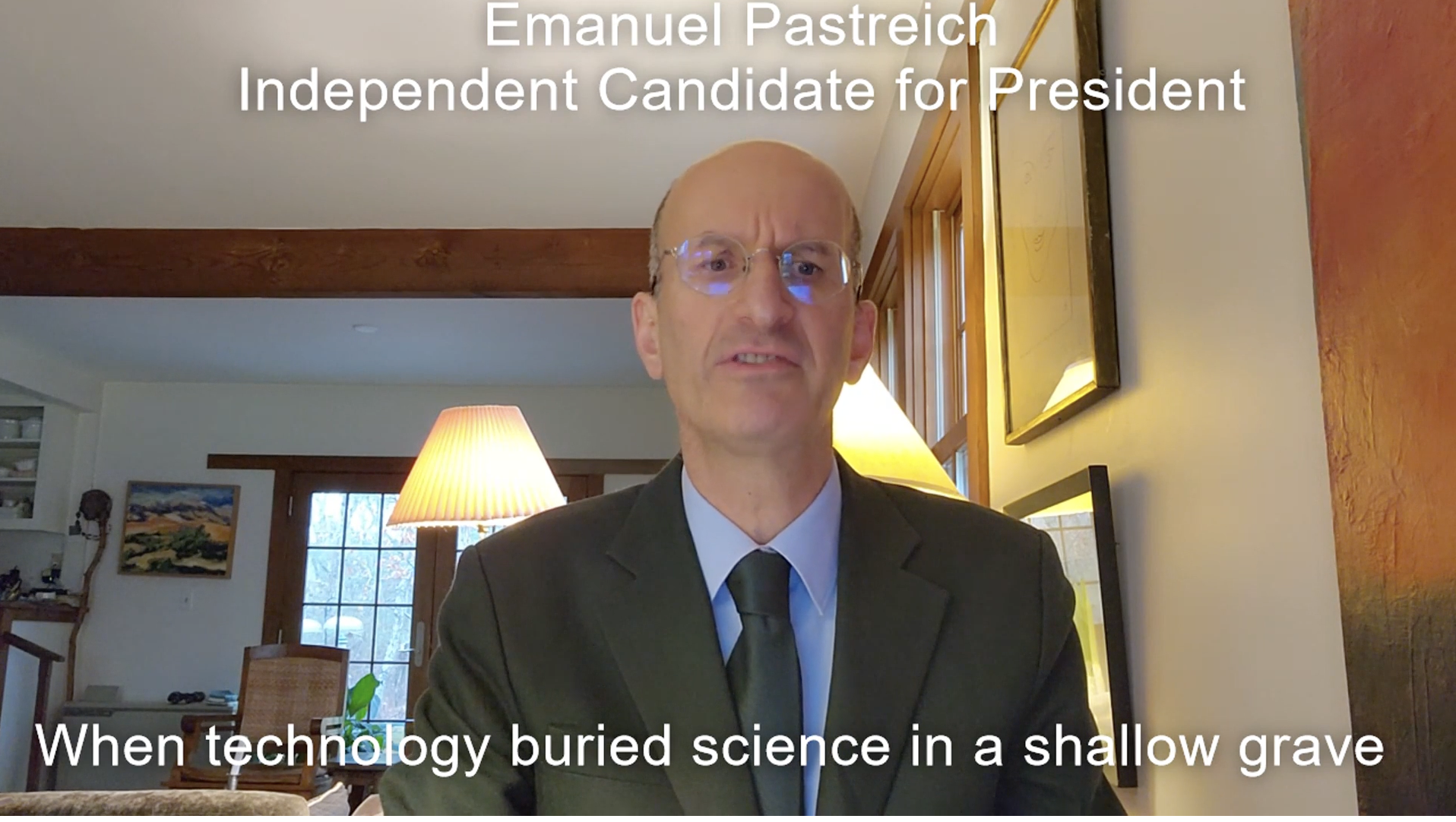
 At the outset of 2023, its Global Debt worldwide, included the following:
At the outset of 2023, its Global Debt worldwide, included the following: The Worldwide Corona Crisis, Global Coup d’Etat Against Humanity
The Worldwide Corona Crisis, Global Coup d’Etat Against Humanity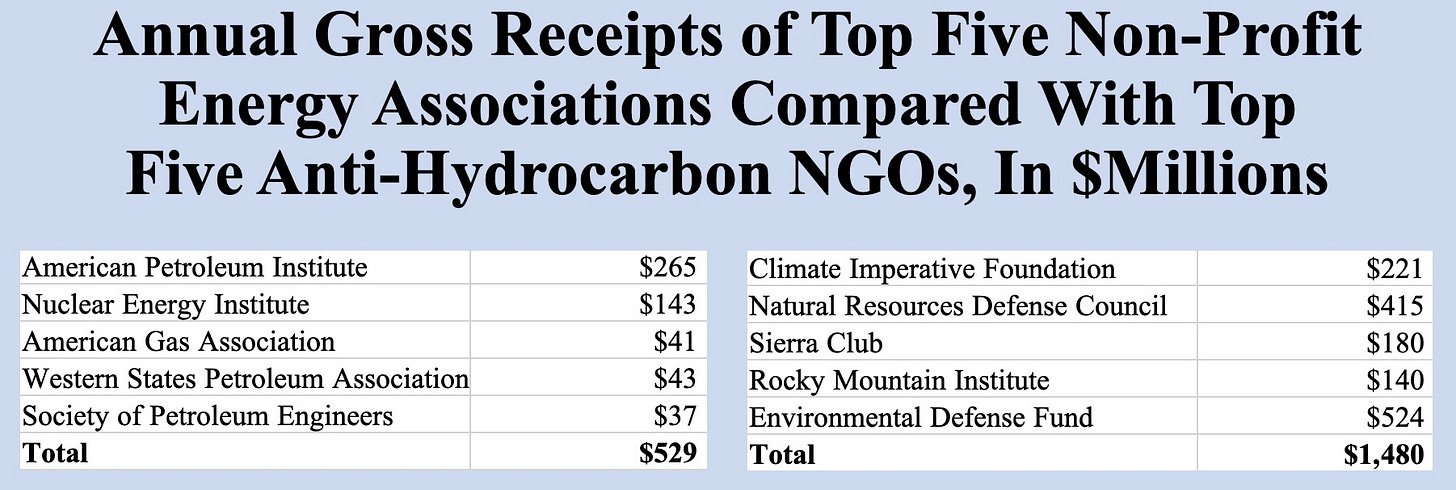


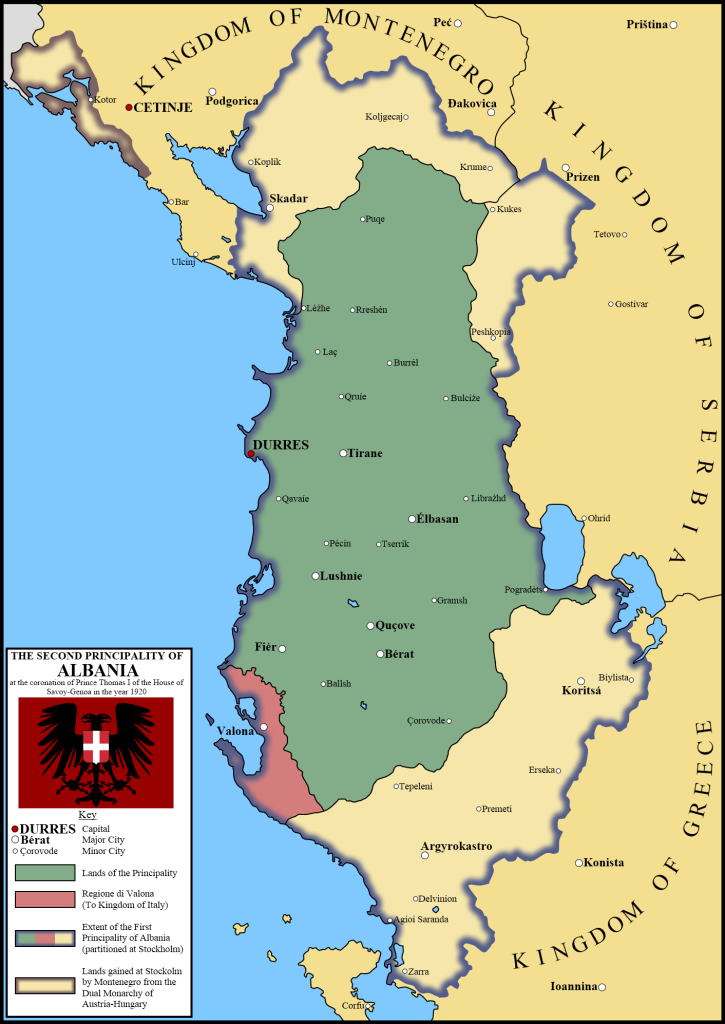
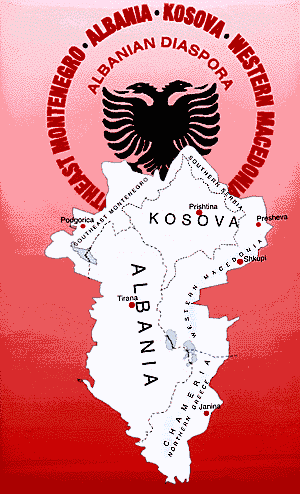
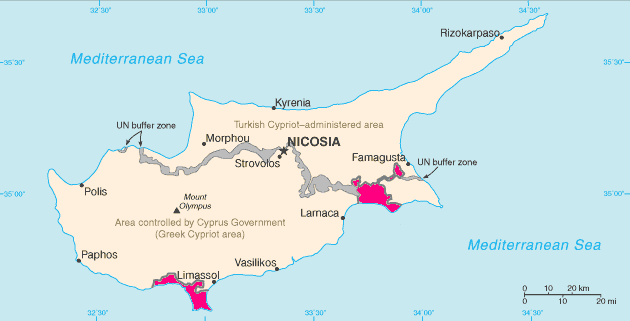
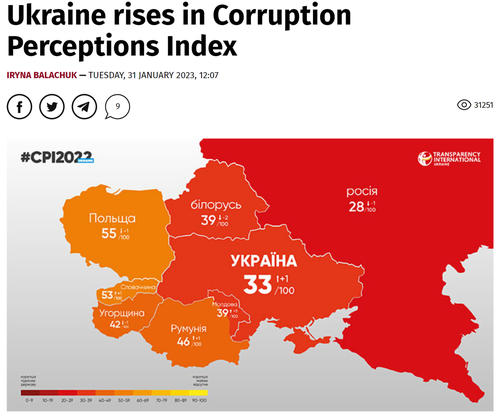










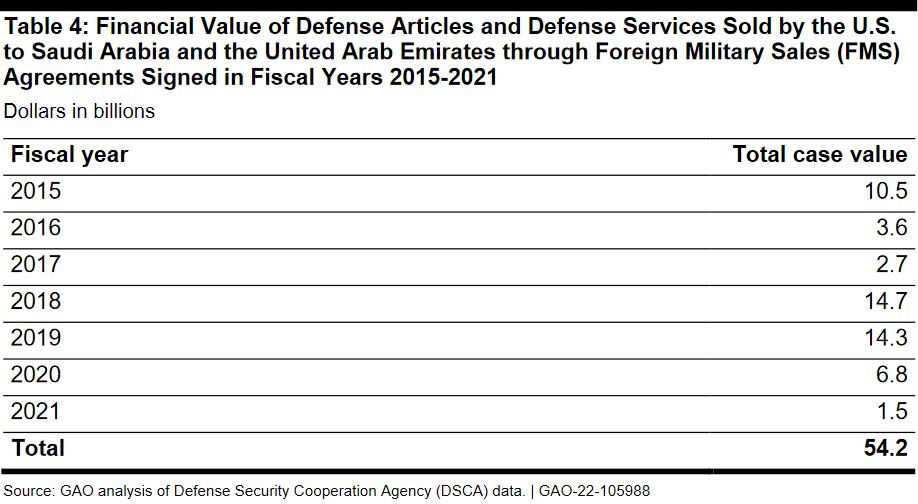







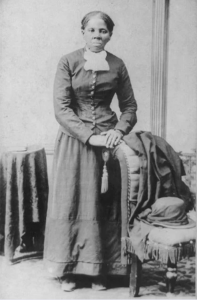

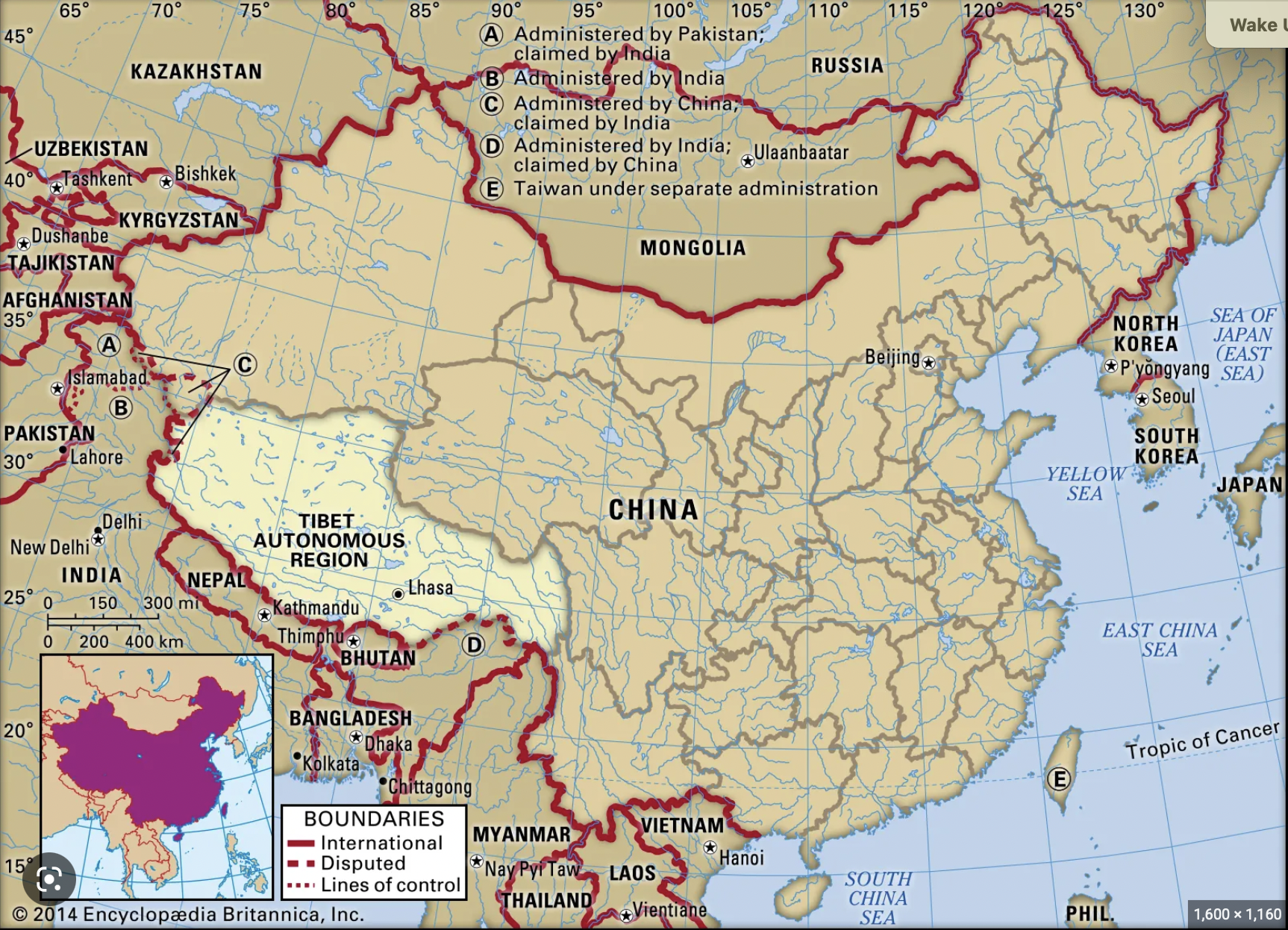



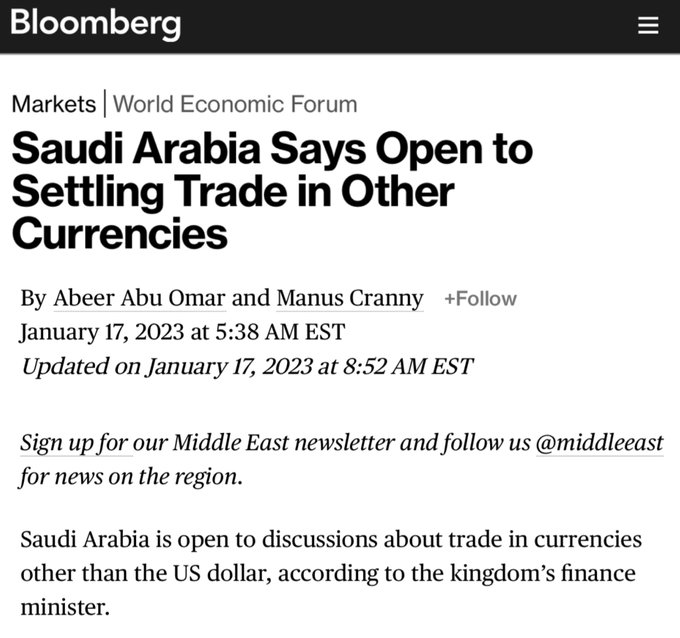




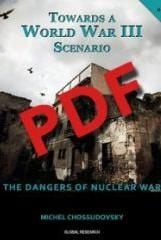

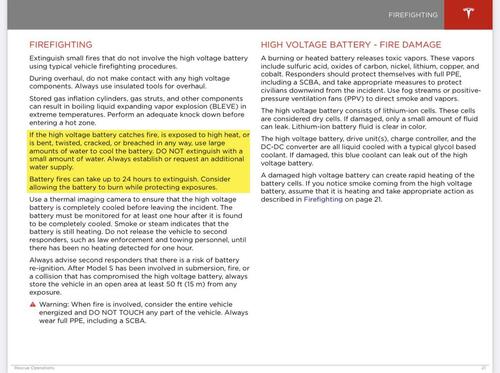
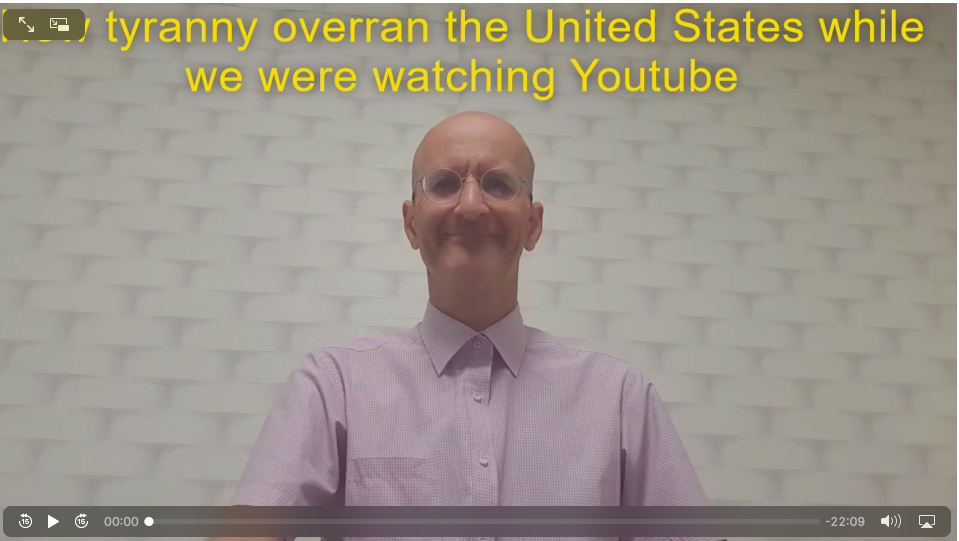








 Alexander Mercouris: “Something Big Is on the Way”
Alexander Mercouris: “Something Big Is on the Way” Ukraine: Is the Hammer About to Fall?
Ukraine: Is the Hammer About to Fall? The WEF and WHO – Are They Running a Death Cult? A WHO / Pharma controlled Worldwide Tyrannical “health system”
The WEF and WHO – Are They Running a Death Cult? A WHO / Pharma controlled Worldwide Tyrannical “health system” The Covid “Killer Vaccine”. People Are Dying All Over the World. It’s A Criminal Undertaking
The Covid “Killer Vaccine”. People Are Dying All Over the World. It’s A Criminal Undertaking Video: Pfizer’s “Secret” Report on the Covid Vaccine. Beyond Manslaughter. The Evidence is Overwhelming. The Vaccine Should Be Immediately Withdrawn Worldwide
Video: Pfizer’s “Secret” Report on the Covid Vaccine. Beyond Manslaughter. The Evidence is Overwhelming. The Vaccine Should Be Immediately Withdrawn Worldwide WEF Davos – The New Sodom and Gomorrah?
WEF Davos – The New Sodom and Gomorrah? Look Up! Wake Up, People! You Are Being “Suicided in Warp Speed”.
Look Up! Wake Up, People! You Are Being “Suicided in Warp Speed”. Seeing Is Believing: What the Data Reveal About Deaths Following COVID Vaccine Rollouts Around the World
Seeing Is Believing: What the Data Reveal About Deaths Following COVID Vaccine Rollouts Around the World Davos 2023: Fragmenting the World
Davos 2023: Fragmenting the World Is Biden Being Blackmailed to Send US Combat Troops to Ukraine?
Is Biden Being Blackmailed to Send US Combat Troops to Ukraine? Top Japanese Physician-Scientist Gives Dire Warning About COVID-19 mRNA Vaccines: ‘Scientifically Misconceived’
Top Japanese Physician-Scientist Gives Dire Warning About COVID-19 mRNA Vaccines: ‘Scientifically Misconceived’ The Whole of Europe Turned Into a Battlefield
The Whole of Europe Turned Into a Battlefield Ukraine Had Lost the War Before It Even Started
Ukraine Had Lost the War Before It Even Started Ten Inconvenient Truths About Ukraine Largely Ignored by the Media
Ten Inconvenient Truths About Ukraine Largely Ignored by the Media Video: Bombshell Docs Reveal COVID-19 Cover-Up Goes Straight to the Top. Redacted with Clayton Morris
Video: Bombshell Docs Reveal COVID-19 Cover-Up Goes Straight to the Top. Redacted with Clayton Morris Prelude to the 2023 WEF Davos Meetings. “Cooperation” in Triggering “Depopulation” and a “Fractured World”
Prelude to the 2023 WEF Davos Meetings. “Cooperation” in Triggering “Depopulation” and a “Fractured World” Video: US Military Oversaw Secret Contents of COVID Jabs
Video: US Military Oversaw Secret Contents of COVID Jabs PfizerGate: Tragic Truth Behind COVID Vaccines in the U.K.: 47,379 Excess Deaths in 8 Months Due to Vaccination
PfizerGate: Tragic Truth Behind COVID Vaccines in the U.K.: 47,379 Excess Deaths in 8 Months Due to Vaccination Bomb Cyclones and Atmospheric Rivers: Is Someone Messing with the Weather?
Bomb Cyclones and Atmospheric Rivers: Is Someone Messing with the Weather?





























